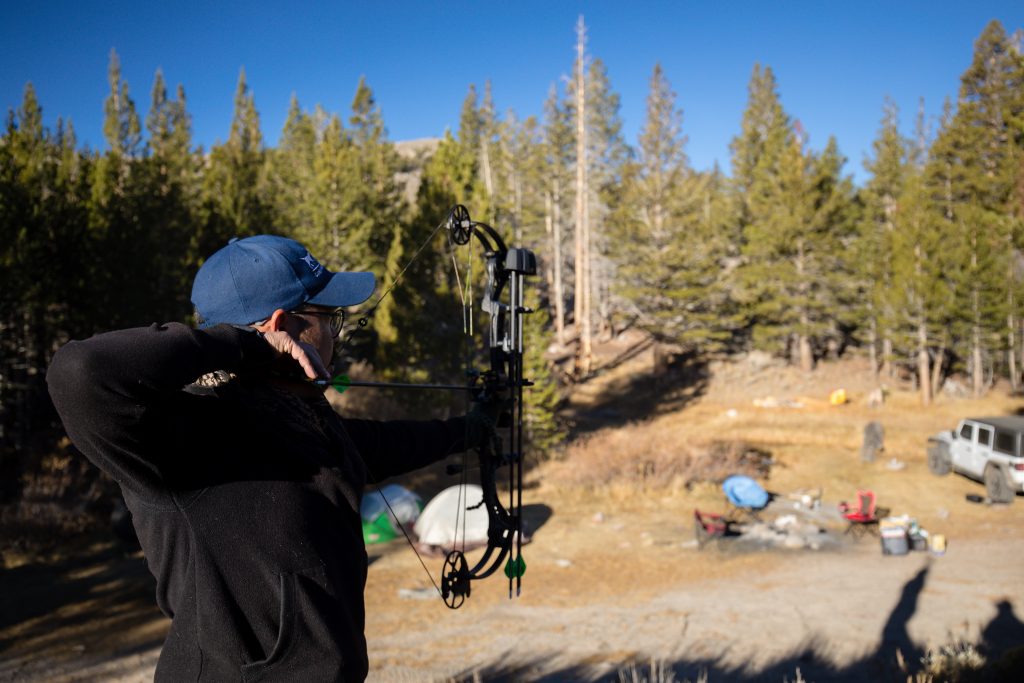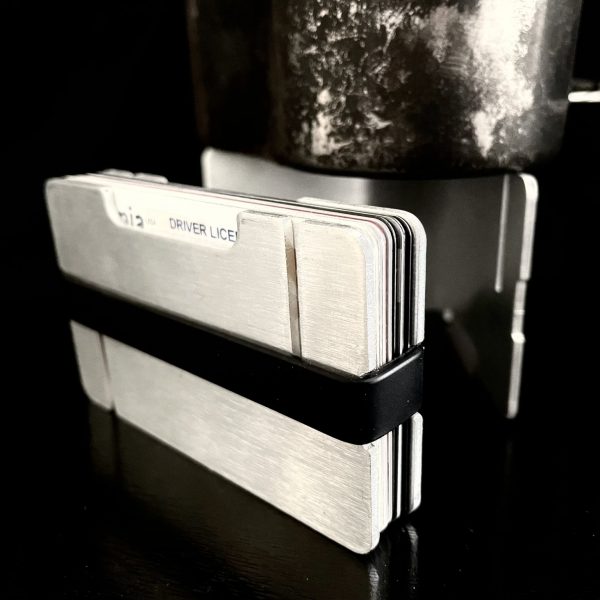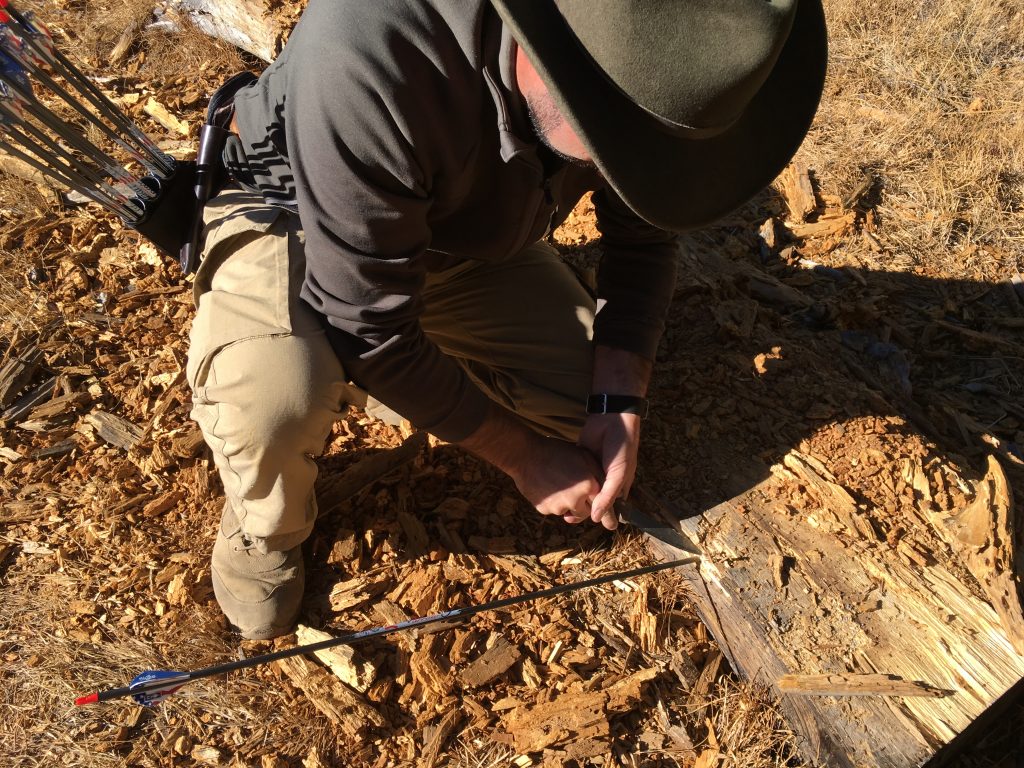
How to Tune Broadheads to Field Points
Perfect arrow flight keeps me up at night. In a time not too long ago, every time I’d pick up my compound bow, I’d drop it for my traditional bow as a hunting application. I love my trad bow. I’m the only one that can be wrong when shooting my trad bow. With my compound bow, I find myself fiddling with it more than sending a rain of arrows down the archery range. Further, I’d blame the bow for any arrow that landed amiss. In total ownership time, I’ve never been able to effectively tune broadheads to field points. The idea that broadheads could be tuned to land in a group of field points seemed more like a hypothetical than something attainable. Below, I lay out the steps on how to tune broadhead to field points.
-
 Bushcraft Hat$35.00
Bushcraft Hat$35.00 -


 Upland Hunting Hat$35.00
Upland Hunting Hat$35.00 -


 Tactical Wallet Stove$45.00
Tactical Wallet Stove$45.00 -


 Stay Sharp Wolf T-Shirt$35.00
Stay Sharp Wolf T-Shirt$35.00 -


 Hack Outdoors Pocket Knife Dad Hat$35.00
Hack Outdoors Pocket Knife Dad Hat$35.00 -


 Hack Outdoors Camping Five Panel Cap$35.00
Hack Outdoors Camping Five Panel Cap$35.00 -


 FEAR Survival: Fuck Everything and Run T-Shirt$35.00
FEAR Survival: Fuck Everything and Run T-Shirt$35.00 -


 Hack Outdoors American Treasure T-Shirt$35.00
Hack Outdoors American Treasure T-Shirt$35.00 -


 Hack Outdoors Trout Fishing Trucker Cap$35.00
Hack Outdoors Trout Fishing Trucker Cap$35.00
Recommendation: Read the Manual
While furniture manuals are merely suggestive and considered a waste of printing power, a compound bow‘s manual should be shackled to a limb.
When I first received my bow, my amateur bow technician skills wonked up the entire set up. I attempted to craft the bow specifications to my own shooting habits, rather than looking up manual recommendations (read: specifications).
I wanted to turn my 70-lb pull bow to ~60-lbs and took the route that seemed most apparent. I put the string loop on the -1 setting to tune down the draw weight. Easy.
Second, I wanted adequate draw left-off so that I could sit on a wall of unweighted draw left-off for at least a day. I turned the draw stop out to my furthest draw point. I did nothing further.
In making these arbitrary changes, the bow would constantly kick arrows tail down through my rest. Coming from the traditional world, this was a simple game of nock height to rest relation. Up and down didn’t really make any changes.
If I had read the manual, these specifications recommended by the manufacturer were all laid out for me. I merely needed to keep the standard setting on draw weight, loosen the limb bolts out a few turns, and set the draw stop to the recommended setting. This would have set the timing of the cam to push the arrow from the center of the string, rather than slightly pull up towards the pulley upon release.
My 80-yard groups fit in the size of a fist now. Definitely do this.
How to Tune Broadheads to Field Points:
Now that the bow is in proper specifications and any points of human error are eliminated, it’s time to tune broadheads to field points. Also, make sure your arrows are of proper spine and quality. Something like Carbon Express arrows are an economical, quality purchase. To emphasize, the bow should be in spec so that the timing is correct and you can eliminate that from the potential list of technology issues.
Step 1: Make sure you and the bow are consistent
There is no point in starting to tune broadheads to field points if your groups are wide. The process of elimination is key in dialing out any issues that would block one from achieving this tune. Once your groups are flying true, grouping well, and you feel that your arrows are actually laser beams, we can fine tune to dial out differences in arrow flight.
At this point, the assumption is that the arrows are consistently made. We also know that the bow is in spec. The groups of field points should be close if not touching at reasonable distances, say 20-40-yards.
Step 2: Fire off two broadheads
More than likely, these broadheads will not land where you were aiming. But that’s okay! We’ll get there.
Step 3: Loose a group of field points
To validate that your field points are still tuned true, you’ll need to establish where the field points land in relation to aiming point. More than likely, these should land where you are aiming.
Step 4: Find the relationship
Where did the broadheads land in relationship to the field points? Left-high? Right-center? Take note on this.
Step 5: Fine tune the rest for center shot
Based on where the relationship is between the field points and broadheads, this will allow us to tune broadheads to field points and group them.
If the group of broadheads are to the right of the group of field points, start with moving the rest in tiny increments to the left. On a field pointed arrow, the rear is taking on the most air to straighten out the arrow in direction of the bow string. The arrow rest being off center will be masked by the way the arrow is controlled in flight. Broadheads, however, catch more air, so the direction of the arrow will be more extreme when leaving the bow.
The difference is similar to a rear-wheel drive car compared to an all-wheel driven car.
If you follow drifting at all, a rear-wheel drive car is able to kick the tail out while steering opposite of direction of movement. In an all-wheel drive car, the front wheels have power and the movement of the car is more true.
As for tuning the rest, you should be able to move it in increments that make sense: left, right, up, down. If the broadheads are landing higher than the field points, adjust the rest down. The field points are correcting themselves with rear draft earlier than the broadheads are.
Step 6: Repeat
At this point, you should be on the path to tune broadheads to field points. You should see the groups of both arrows get closer in relation to one another. Do not change your sights to compensate just yet. Once the groups are the same, adjust the sights as you normally would. Move the sights towards the group of arrows in relation to your aim point.




